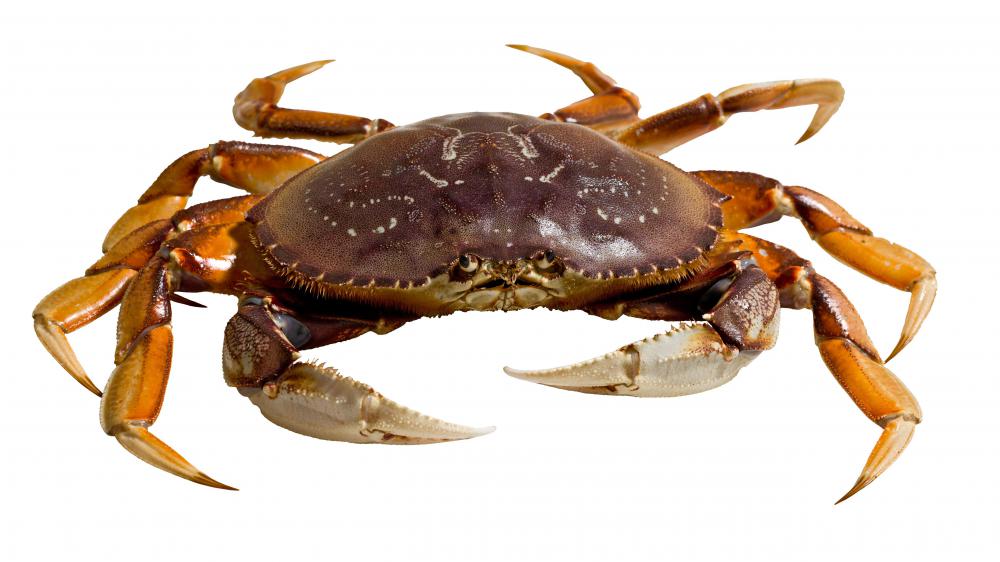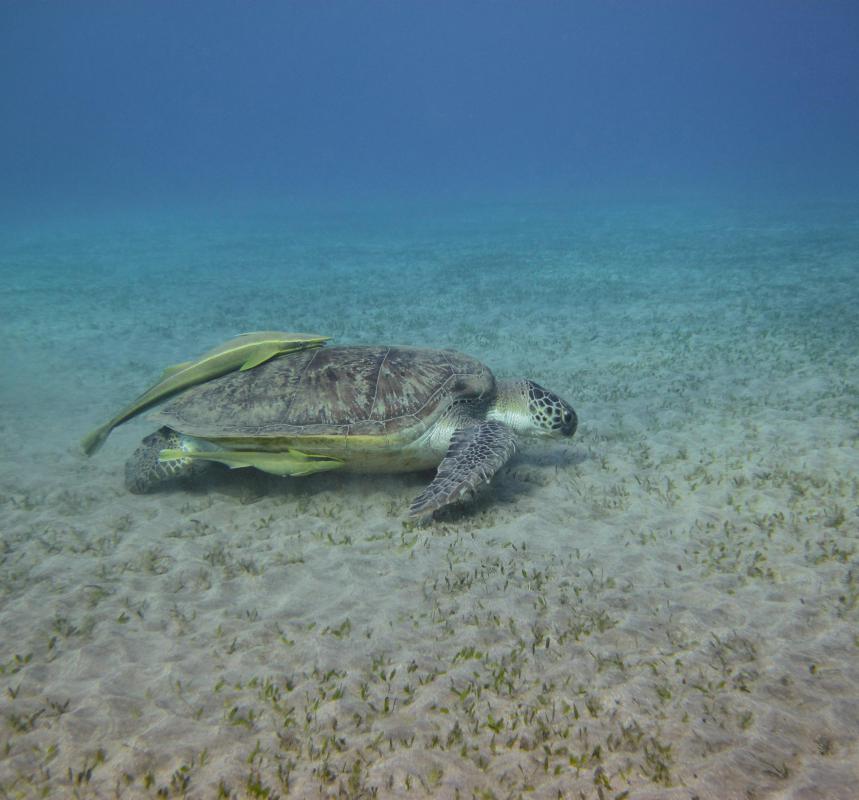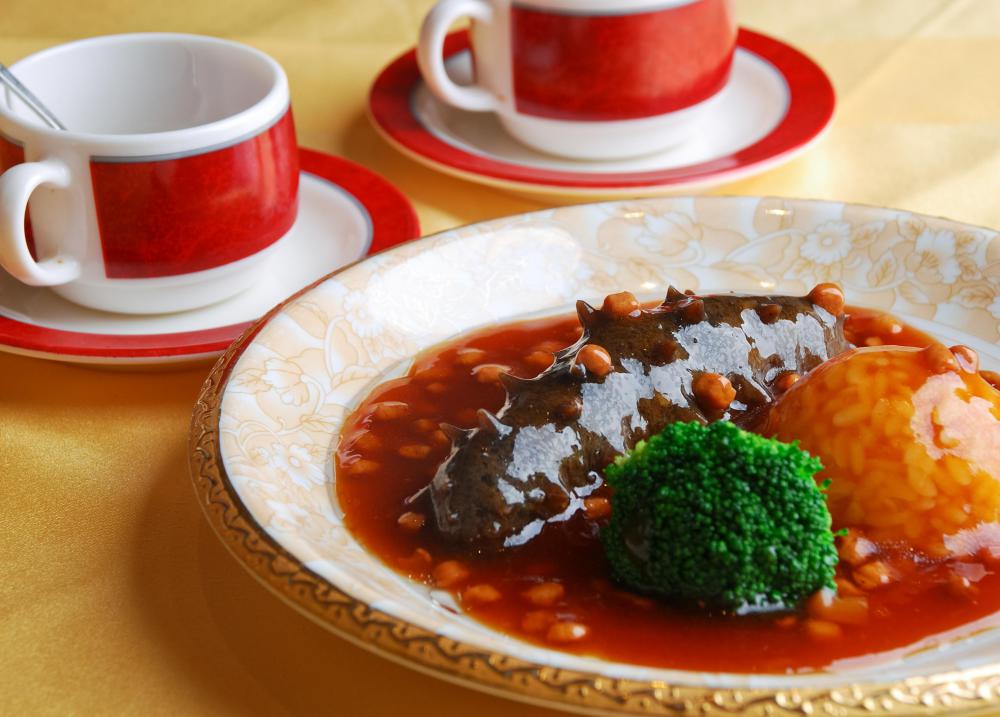At AllThingsNature, we're committed to delivering accurate, trustworthy information. Our expert-authored content is rigorously fact-checked and sourced from credible authorities. Discover how we uphold the highest standards in providing you with reliable knowledge.
What is a Sea Slug?
A hermaphroditic underwater creature, a sea slug can typically be located on coral or rocks in the sea. Also known as a sea cucumber, a sea slug can vary in length from an inch (about 2.5 centimeters) to one foot (about 31 centimeters). More than 3,000 varieties of the species exist and come in various of colors. The sea creature belongs to the gastropod family and can live anywhere from six weeks to one year.
Technically, sea slugs are nudibranches, which is Latin for "naked gills." Many varieties of sea slug carry their gills on their backs. When the creatures are young, they shed their shells, which never grow back.

While sea slugs are tiny creatures, they are not defenseless. Sea slugs are not affected by the paralyzing stingers of potential predators, such as sea anemones or corals. Instead, a sea slug soaks the stingers into its body and will use the weapons against any creature that tries to attack it.
Similar to skunks, sea slugs can secrete an odorous substance to ward off attacks. Some species of sea slugs possess tentacles, which are used for defense. Brightly colored creatures, sea slugs use their colors to blend into the environment and hide from predators. Sea slugs also can use their vibrant colors to present themselves as something that would be dangerous for would-be predators to eat.
Despite their numerous defense mechanisms, sea slugs do still fall prey to some creatures. Sea spiders, turtles, sea stars, lobsters, and crabs are natural predators of sea slugs. Sea slugs also are harvested by humans.

Slow moving creatures, sea slugs move along the sea floor looking for food. The creatures possess small teeth in their mouths, which are located on the underside of their heads, and they use chemical signals to find food. Sea slugs feed on barnacles, sponges, snails, and plankton. Some sea slugs even feed on other sea slugs.
Containing both male and female sex traits, nudibranches lay thousands of eggs at least once a year, depending on food supply. Eggs attach to rocks or sand in crevices. After a few weeks, the eggs are fertilized and then hatch.

Sea slugs are often kept in saltwater aquariums to help reduce the level of algae in the tanks. The creatures are also of interest to humans for their potential in healing. Scientists have studied the creatures to see how chemicals in their bodies can help with heart, bone, and brain aliments.
Frequently Asked Questions
What exactly is a sea slug, and how does it differ from a land slug?

A sea slug is a marine invertebrate with a soft body, part of the phylum Mollusca, class Gastropoda. Unlike land slugs, sea slugs have evolved to live in saltwater environments. They exhibit vibrant colors and diverse shapes, often mimicking their surroundings for camouflage or warning predators of their toxicity. Sea slugs include nudibranchs, which are known for their extraordinary colors and forms.
Can sea slugs be harmful to humans?
Most sea slugs are harmless to humans, focusing their defense mechanisms on predators in the ocean. However, some species, like the blue-ringed sea slug, contain toxins that can be dangerous. It's always wise to admire sea slugs from a distance, as touching or handling them can potentially expose individuals to harmful substances or provoke a defensive reaction.
What do sea slugs eat, and how do they contribute to the marine ecosystem?
Sea slugs have varied diets, with some feeding on algae, others on sponges, and some even preying on other sea slugs. They play a crucial role in the marine ecosystem by controlling algae growth, recycling nutrients, and serving as prey for other animals. Their selective feeding habits can also influence the composition of coral reef communities.
How do sea slugs reproduce?
Sea slugs are hermaphrodites, meaning they possess both male and female reproductive organs. They can mate with any mature individual of their species, exchanging sperm to fertilize their eggs. Some species lay colorful egg ribbons, which they attach to substrates. These eggs hatch into free-swimming larvae before settling to the ocean floor and maturing into adults.
Are sea slugs important for scientific research?
Yes, sea slugs are incredibly important for scientific research. Their simple nervous systems make them excellent models for neurological studies. Additionally, compounds derived from sea slugs have been used in developing new medications for various ailments, including pain relief and cancer treatment, showcasing their potential in biomedical research.
How are sea slugs affected by climate change and pollution?
Sea slugs are sensitive to changes in their environment, making them susceptible to the impacts of climate change and pollution. Rising ocean temperatures can disrupt their habitats and food sources, while ocean acidification can affect their ability to grow and reproduce. Pollution, such as oil spills and plastic waste, can also be detrimental to their survival.
AS FEATURED ON:
AS FEATURED ON:














Discussion Comments
We had sea slugs in our canals on Venice Beach about 14 years ago. Then they disappeared and came back this year. Do you know why that would have happened?
Thanks to all of you for the great information on sea slugs. You have all helped me out tremendously. That's why I love WiseGeek!!!!
Sea slugs are actually quite fascinating. They creep along the bottom of the ocean floor or cling to submerged vegetation, usually in water just below the low tide line. Some of the species swim on the surface of an open ocean.
They are regarded by many as one of the most beautiful marine animals, contrary to their yucky sounding name! They often have feathery structures called ceratia on their back. The ceratis are usually in a contrasting color.
If any of you have an opportunity, you should look at some pictures of the sea slugs. They are quite beautiful and their color is very vibrant.
@momothree: The sea slug is a marine gastropod mollusk. They are classified in the phylum Mollusca, class Gastropoda, sublass Opisthobranchia, and order Nudibranchiata. I hope that helps you and good luck with your project.
First, I love your articles on WG! They are very helpful. I am a Biology student and I have to do a report on sea slugs.
I need to know the sea slug phylum, class, subclass, and order. Can anyone help me out?
Post your comments